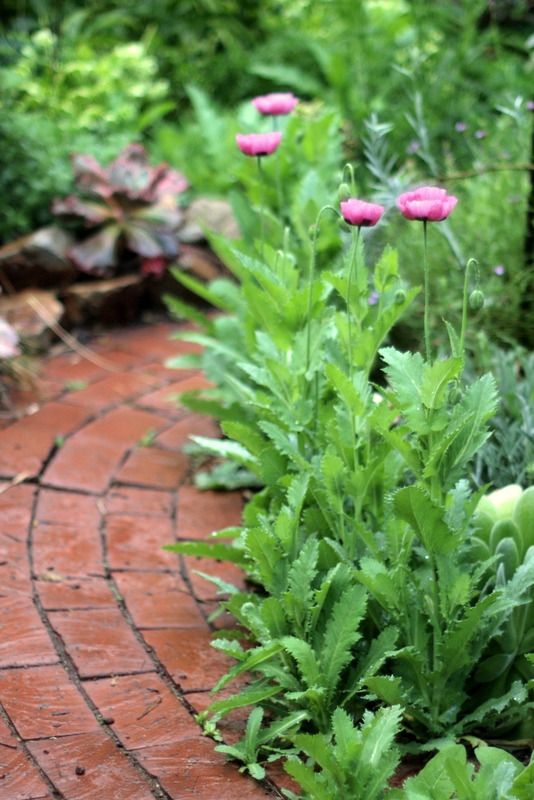
Typical for March, the reseeding poppies are the biggest showboats in my garden at the moment.
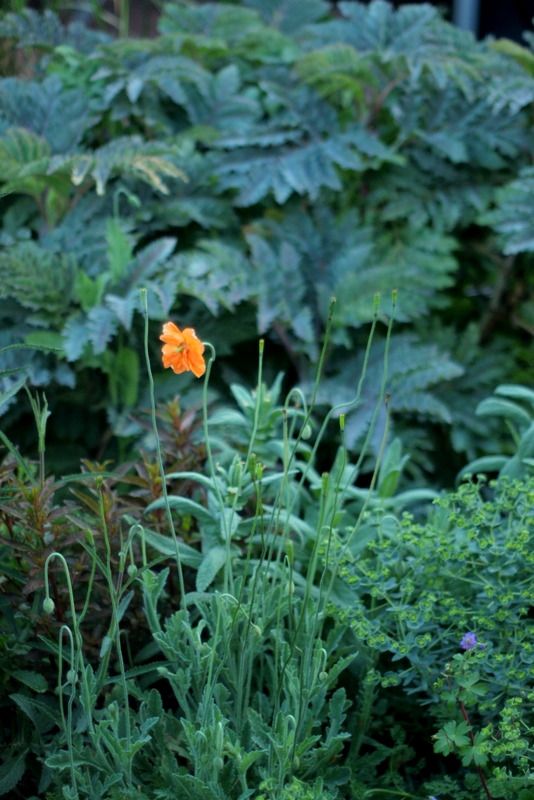
Anticipating where and against what backdrop another loopy-necked bloom will open each morning is a huge part of their appeal.
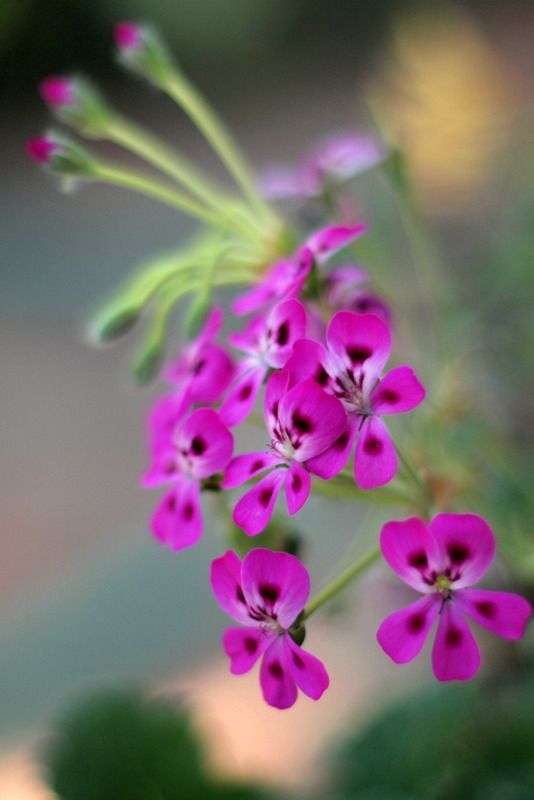

Summer-dormant Pelargonium echinatum has been so easy to rouse from its dormancy. Always in a pot, I keep it dry from late spring/early summer until around Novemberish.
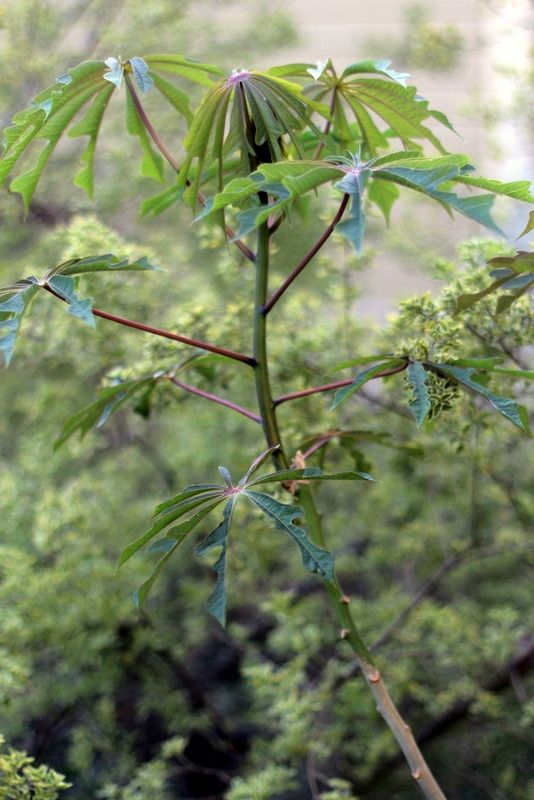
No blooms here, but to me it’s just as exciting to see the manihot leaf out again in March.
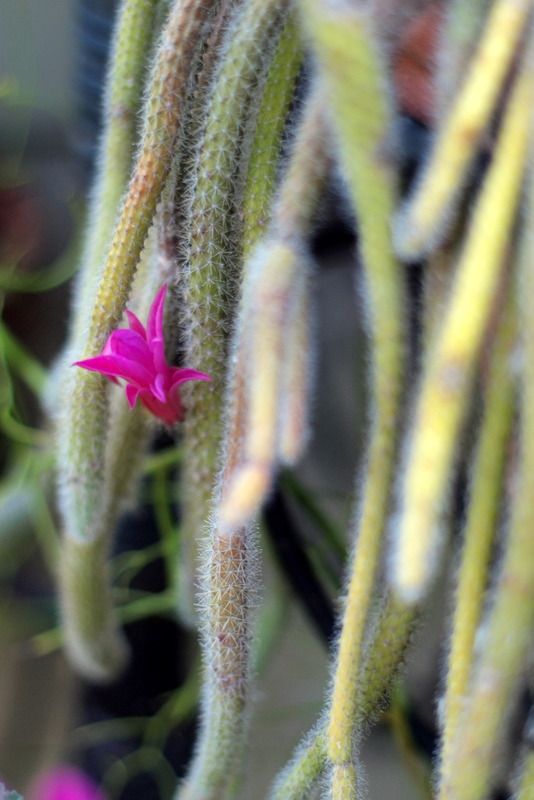
Long, pale green, fading to buttery yellow stems send out these shocking pink flowers. Silky petals against furry stems, the rat-tailed cactus really nails it for me.
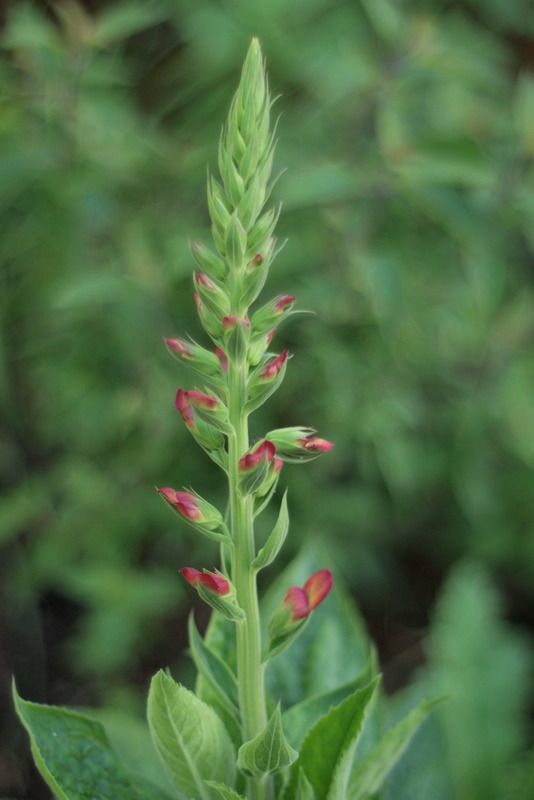

Two of the three clumps of the digitalis/isoplexis union, Digiplexis ‘Illumination Flame,’ are throwing rainbow sherbert-colored spikes.
This summer will be the first garden trials for those of us plant geeks enthusiasts who chased down this literally brand-new perennial.
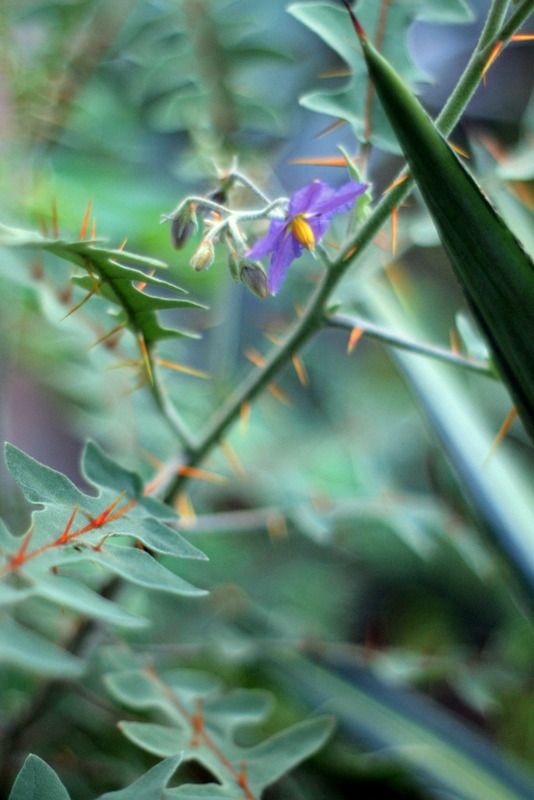
A self-sown Solanum pyracanthum wintered over and is early to bloom.
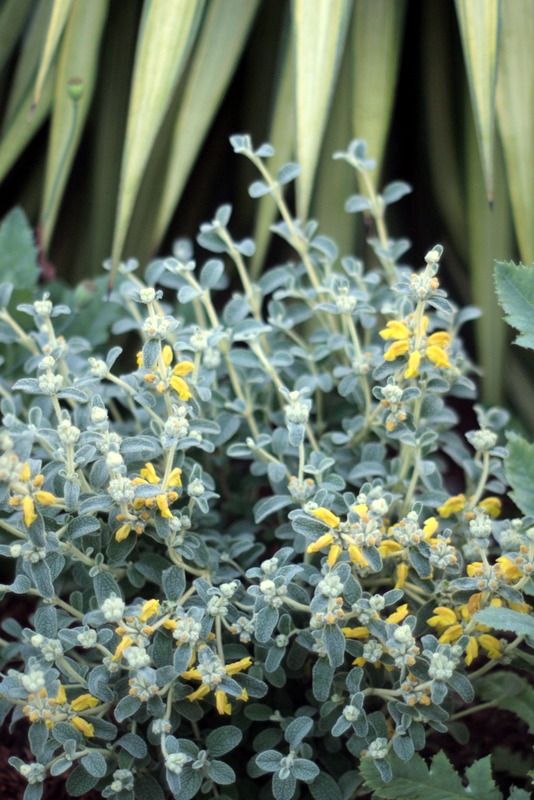
One of the three Phlomis lanata I planted in fall.

After seeing a photo by Andrew Lawson of Tom Stuart-Smith’s use of phlomis at Broughton Grange, I knew I wanted phlomis back in the garden. I’ve tried lots of kinds of phlomis over the years, and if this P. lanata lives up to its reputation for compactness, it just might be the one. Bigger gardens than mine can tackle the oversize, leafy ones like russeliana and fruticosa.
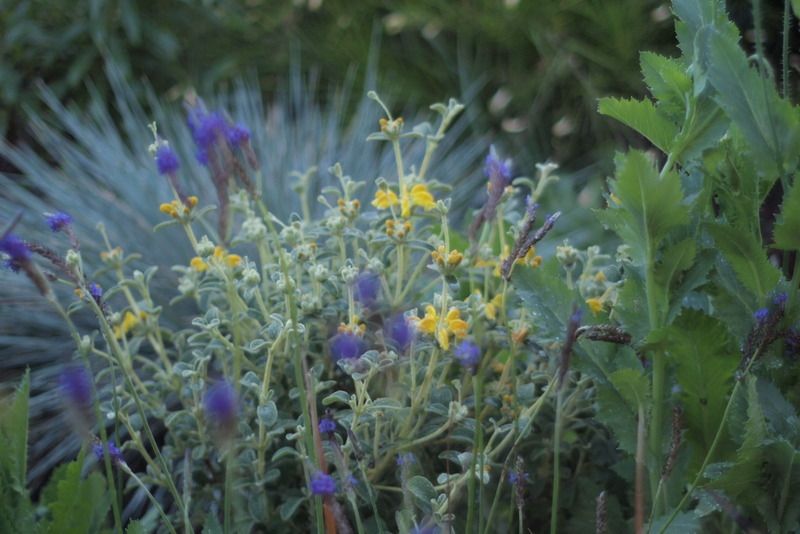
But Phlomis lanata doesn’t grow up, it grows out, bulging sideways as much as 4-6 feet across while topping out at about 2 feet in height. (Maybe I’ll eventually need just one of the three I’ve planted…)
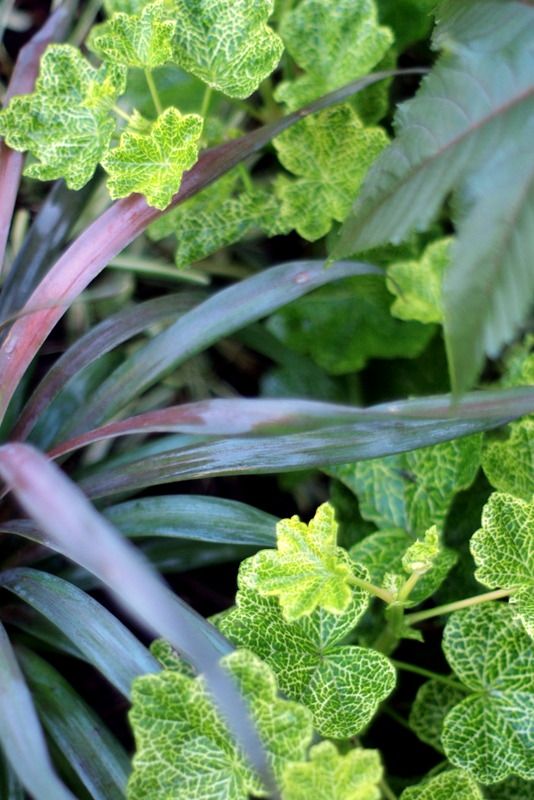
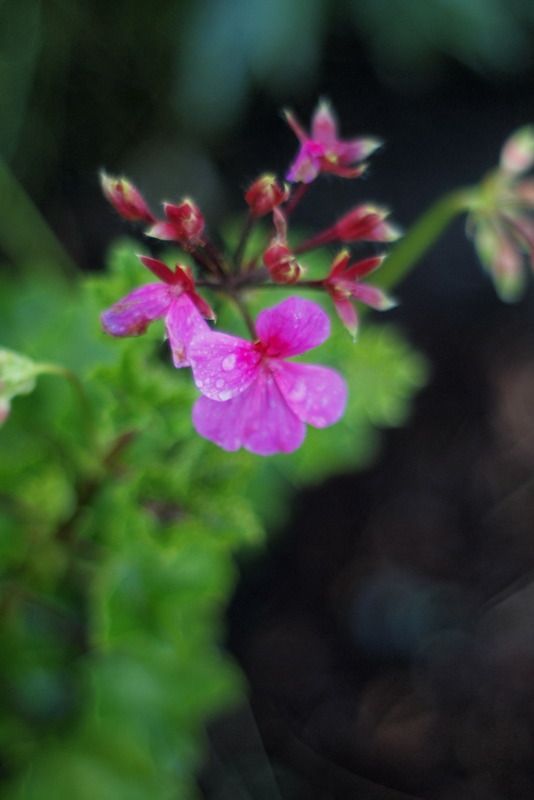
I think it’s no secret that we’re all attracted to Pelargonium ‘Crocodile’ because of those gold-fretted leaves and not its flowers.

But I suppose the flowers are tolerable when there’s not much else blooming. And blue oat grass in the background makes anything look good.

A lot of the self-sowers like Orlaya grandiflora are just getting revved up.
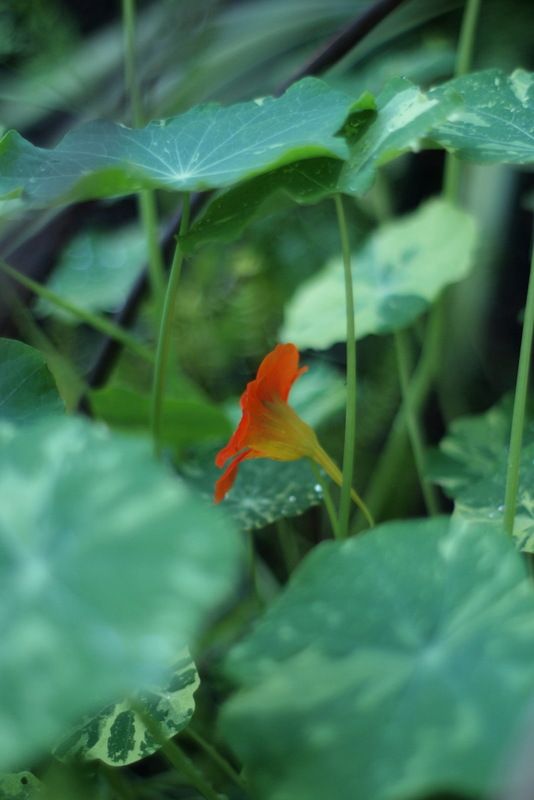
Nasturtiums are mostly pulled out and composted to give some of the other volunteers runnning room.
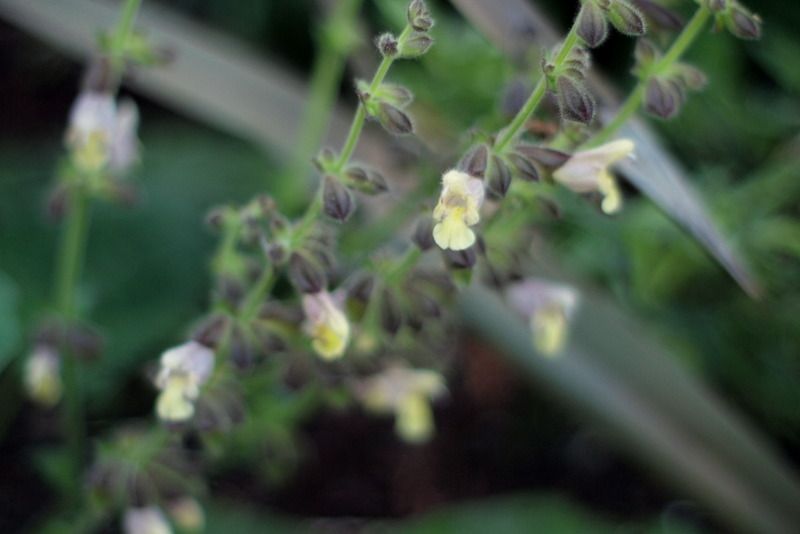
Not for lack of trying, but this is the best photo I could get of a very promising salvia, what Annie’s Annuals & Perennials sold as Salvia flava. The photo on her website is much better. I really, reeeally hope it likes my garden.
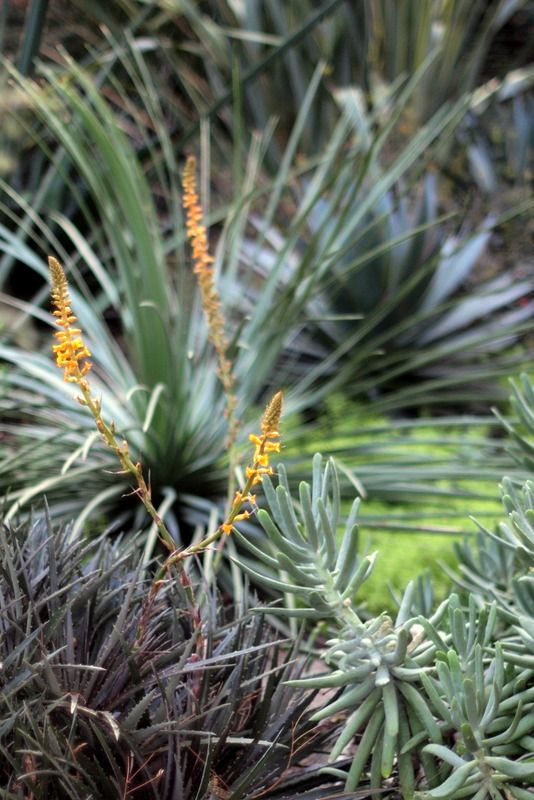
The front garden has very little but dyckias in bloom, which is actually reassuring since if any of the agaves bloom, it means their demise isn’t far behind.

For the butterflies, Verbena lilacina
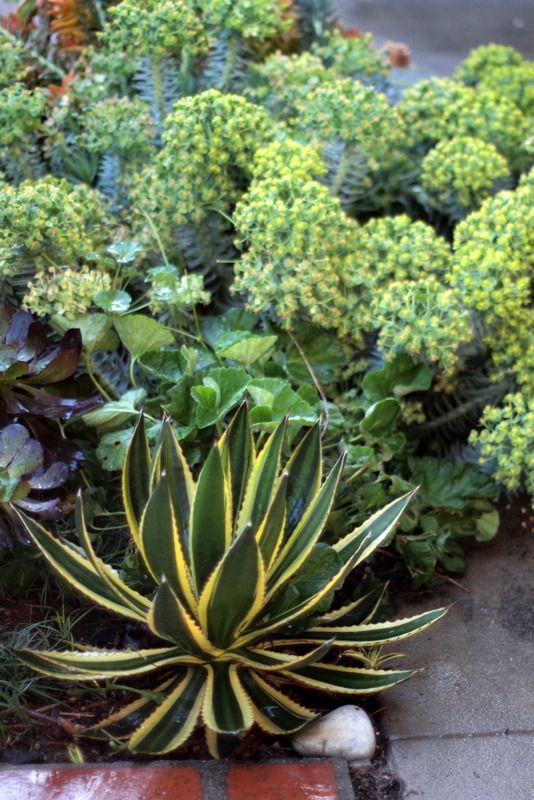
Euphorbia rigida, claiming quite a bit of the roadway just outside the kitchen door, also claims all the bees’ attention. Always lots of good bee watching here.
We have Carol at May Dreams Gardens to thank for inducing us to keep these monthly records of our gardens. I can now easily check back to March 2013 and see what plants I’ve since killed or evicted, not to mention potentially discover some sort of pattern to the erratic blooming habits of Scilla peruviana, which seems to have taken this year off after blooming in 2013.

I ordered a tray of Digiplexis plugs to trial in the gardens at work. It will be interesting to see if they live up to the marketing.
Les, yes, I wonder what conditions it will like? I’ve optimistically moved all mine into varying versions of mostly full sun, and they’ve made good size in winter but we’ll see how they fare under the much stronger summer sun.
What a lot you have in bloom; all summer flowers with us. No need to cross out ‘geeks’ that’s what we all are. My husband calls us ‘anoraks’ which is what we all are. Total fanatics. Still it’s harmless, being fanatical about plants. I love that Pelargonium echinatum.
The poppies are beautiful, as are the rest of your selections, but I was really excited to see the budding stems of the Digiplexis! I put one in last fall after receiving your heads-up that Roger’s had them in stock. I recently acquired 3 more by mail order from Annie’s, which went into my new planting bed. I’ve seen no signs of flowering yet but your pictures give me hope that at least the oldest may come through this spring.
Wow! Such unusual plants! We are both in California and both patronize Annie’s Annuals, yet I hardly recognize a single one of your plants.
Kris, the high temps today, to mid 80s, were quite the stress test for them! But they had recovered by sundown.
Gayle, the first orlaya plants were from Annie’s, and it’s reseeded ever since. Also the Papaver setigerum. Pelargonium echinatum has been with me so long I forget the source, but I’m sure Robin Parer’s nursery Geraniaceae carries it http://geraniaceae.com/cgi-bin/welcome.py
I’m trying a Phlomis lanata for the first time and hoping for a good bloom show this spring — unless that last ice storm nipped it. I had no idea it could get 4 to 6 feet wide.
Your pictures are stunning…they make the plants look beautiful, although they are.
Pam, that’s what San Marcos’ website lists for its ultimate size. And apparently it’s very long-lived too. (http://www.smgrowers.com/products/plants/plantdisplay.asp?plant_id=1230)
Lisa, I try to make my camera see what I do — too often we don’t mesh. I need to get some more technical chops and different lenses too.
Lovely photos, really captured the plant essences. I hear the only problem with the Digiplexis is that the inflorescences are aphid magnets, so keep a watchful eye…